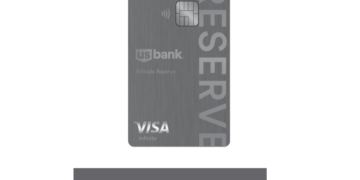The Role of Personal Finance Applications in Debt Management and Acceleration of Payments

The Importance of Effective Debt Management
Individuals in the United States are increasingly grappling with high levels of personal debt, driven primarily by factors such as soaring education costs, rising healthcare expenses, and easy access to credit. According to a 2022 report by the Federal Reserve, total household debt reached approximately $15.5 trillion, with student loans alone accounting for over $1.7 trillion of that figure. In this financial landscape, effective debt management is not merely advisable but essential for achieving long-term financial security.
Features of Personal Finance Applications
As financial burdens escalate, personal finance applications have emerged as vital tools for managing debt efficiently. These applications offer an array of features that empower users to take control of their financial situations. Key functionalities include:
- Budgeting tools: These features allow users to monitor their discretionary spending, helping them allocate a portion of their income toward debt repayment. For example, by tracking daily expenses, a user may find areas to cut back, such as dining out or subscription services, thereby redirecting those funds to pay down high-interest credit card debt.
- Debt trackers: By presenting a consolidated view of all debts, including interest rates and due dates, these tools help users identify which debts require immediate attention. For instance, if a user sees that one particular loan has a significantly higher interest rate, they may choose to prioritize payments towards that debt to minimize interest accrued over time.
- Payment reminders: Avoiding missed payments is crucial in debt management. Payment reminders send alerts before due dates, significantly reducing the risk of late fees and negative impacts on credit scores. Research shows that maintaining a good credit score can lead to lower interest rates on future loans, making timely payments vital.
- Payment calculators: These tools simulate various repayment scenarios, enabling users to visualize the long-term impact of different payment strategies, such as the snowball versus avalanche methods. This deep analysis allows users to make informed decisions on how to best allocate their funds for maximum financial benefit.
Strategic Debt Reduction
By leveraging these functionalities, users can not only streamline their repayment processes but also determine which debts to prioritize effectively. A strategic approach to repayment often leads to accelerated payments, ultimately resulting in improved financial health. For example, the debt snowball method involves paying off the smallest debts first, which can provide psychological motivation and create momentum toward larger debts.
Scalability and Diverse User Base
The scalability of personal finance applications makes them suitable for a wide range of users, from recent college graduates managing their first credit card to families balancing multiple loans and mortgages. These applications are adaptable, allowing users to customize their approach based on unique financial situations and goals.
In conclusion, as personal debt continues to rise, integrating personal finance applications into one’s financial strategy can be transformative. By employing these tools, individuals can cultivate responsible borrowing habits, stay organized, and ultimately pave the way toward achieving financial independence.
LEARN MORE: Click here to discover how to build your emergency fund quickly
Empowering Users Through Personal Finance Applications
In the contemporary landscape of personal finance, personal finance applications have emerged as invaluable allies in the quest for effective debt management. These digital tools not only simplify the often overwhelming details associated with multiple debts but also empower users to adopt a proactive stance toward their financial health. By integrating various features designed to engage users, these applications encourage a disciplined approach to budgeting and debt repayment.
Enhancing Financial Literacy
Another critical aspect of personal finance applications is their ability to enhance financial literacy among users. Many applications provide educational resources that explain fundamental financial concepts, such as interest rates, amortization, and the difference between secured and unsecured debts. By equipping users with this knowledge, they are better prepared to navigate the complexities of their financial situations. Furthermore, understanding these principles can lead to more informed decisions when it comes to taking on new debt, negotiating terms, or seeking debt consolidation options.
Customization and Personalization
Moreover, personal finance applications often offer customization options that allow users to tailor their experience according to their unique financial circumstances. For example, some applications allow users to set goals related to debt repayment, such as reducing credit card debt by a specific percentage within a defined timeframe. This level of personalization can significantly increase user engagement and motivation, as individuals can track progress toward their specific financial objectives.
- Goal Setting: Users can establish measurable targets, such as saving a particular amount for debt repayment within a certain period, making it easier to stay focused and committed.
- Visual Tracking: Many applications include visual dashboards that provide real-time representations of one’s financial health, motivating users to maintain focus on their repayment goals.
- Feedback Mechanisms: By providing insights into spending habits and suggesting alternative strategies, these applications prompt users to reconsider their financial behaviors and foster a culture of responsible money management.
The Psychological Impact of Financial Tracking
The psychological aspects of managing debt cannot be underestimated. Personal finance applications serve as constant reminders of financial obligations, helping users avoid common pitfalls such as procrastination or avoidance. The simple act of tracking expenses and debts can alleviate the overwhelming feeling often associated with financial strain, providing users with a sense of control. Studies have shown that individuals who actively track their finances are more likely to stick to their budgets and achieve their financial goals. This highlights the role of personal finance applications not just as tools for management, but as facilitators of behavioral change in financial habits.
In summary, personal finance applications play a crucial role in equipping users with the tools, knowledge, and motivation necessary for effective debt management. By enhancing financial literacy, allowing for customization, and encouraging consistent tracking of financial obligations, these applications lay the groundwork for smarter borrowing decisions and accelerated payments. As individuals harness the capabilities of these innovative tools, they enhance their path toward financial stability and independence.
DISCOVER MORE: Click here for essential investment strategies
Facilitating Smart Payment Strategies
In the realm of debt management, personal finance applications have transformed the way users approach their payment strategies. These applications not only enable users to visualize their financial landscape but also help them implement sophisticated payment techniques aimed at reducing debt more effectively. By offering tools tailored to varying debt climates, users are empowered to make informed choices that align with their unique financial goals.
Implementing the Avalanche and Snowball Methods
Two widely recognized strategies for debt repayment—the avalanche and snowball methods—are readily supported by personal finance applications. The avalanche method prioritizes debts based on interest rates, directing users to focus on paying off high-interest debts first. This method can lead to significant savings over time, as it minimizes the amount of interest paid. Alternatively, the snowball method encourages users to pay off smaller debts first, providing motivational quick wins that can bolster a sense of accomplishment and persistence.
- Data-Driven Decision Making: Applications often allow users to simulate different repayment scenarios based on interest rates and remaining balances. Such capabilities enable users to choose a strategy that aligns with their financial comfort and timelines.
- Payment Reminders: Timely reminders and alerts regarding payment due dates help prevent late fees and keep users on track with their repayment schedules, reducing the overall debt burden.
Integration with Financial Institutions
Another significant advantage of personal finance applications is their ability to integrate with various financial institutions. This integration allows users to synchronize their account information seamlessly, providing a holistic view of their debts, payment schedules, and cash flow. Users can effortlessly track all their accounts from a single dashboard, facilitating better analysis and quicker decision-making.
In fact, studies have indicated that consumers who utilize integrated applications are more likely to engage in proactive debt management, as they can easily identify trends in spending and identify areas where they can cut back to accelerate payments. For example, if a user notices that discretionary spending is significantly impacting their ability to pay down debt, they can make adjustments more readily. This data transparency not only aids in crafting personalized repayment plans but also fosters a culture of accountability among users.
Leveraging Automated Payment Features
To further enhance efficiency, many personal finance applications offer automated payment features that help users not only schedule recurring payments but also strategize optimal payment amounts based on monthly budgets. These automated solutions eliminate manual tracking and reduce the likelihood of human error in making payments. Furthermore, integrating automation into financial habits can lead to a more disciplined approach to debt repayment, as users are less likely to procrastinate when payments are systematized.
- Automated Savings: Certain applications enable users to create rules for automatic transfers to savings or payment accounts, thereby ensuring that individuals prioritize loan payments consistently.
- Real-Time Adjustments: Users can adjust their payment schedules in response to fluctuating financial circumstances, like an unexpected expense or a temporary loss of income, without losing sight of their overall debt management goals.
The sophisticated features of personal finance applications not only streamline debt management but also enhance user engagement through strategic, informed decisions. By employing methods such as the avalanche and snowball approaches, integrating account information, and utilizing automated features, users can institute flexible, effective strategies that directly contribute to accelerating their payments and achieving financial independence.
DISCOVER MORE: Click here to unlock the secrets to financial freedom
Conclusion
In conclusion, personal finance applications have undeniably revolutionized the landscape of debt management, offering users innovative tools and strategies that facilitate effective payment planning. By integrating critical features such as the avalanche and snowball debt repayment methods, these applications empower individuals to adopt tailored approaches that align with their financial priorities. The ability to visualize financial standings and simulate various repayment scenarios allows users to make data-driven decisions, significantly enhancing their capacity to stay on track with payments.
Furthermore, the seamless integration with financial institutions enhances transparency, giving users a comprehensive view of their debt and cash flow. This holistic perspective fosters accountability while enabling users to identify spending patterns that may impede their repayment efforts. By leveraging automated payment features, users can streamline their repayment schedules, ensuring that timely payments become a part of their financial habits.
Ultimately, personal finance applications serve not only as a means to manage debt but also as a vital ally in the pursuit of financial sustainability. The combination of strategic planning, automated solutions, and real-time adjustments equips users with the tools necessary to accelerate payments and achieve their financial goals. As consumers continue to embrace these digital solutions, the potential for improved debt management and enhanced financial well-being becomes increasingly attainable.

Beatriz Johnson is a seasoned financial analyst and writer with a passion for simplifying the complexities of economics and finance. With over a decade of experience in the industry, she specializes in topics like personal finance, investment strategies, and global economic trends. Through her work on True Metronome, Beatriz empowers readers to make informed financial decisions and stay ahead in the ever-changing economic landscape.





